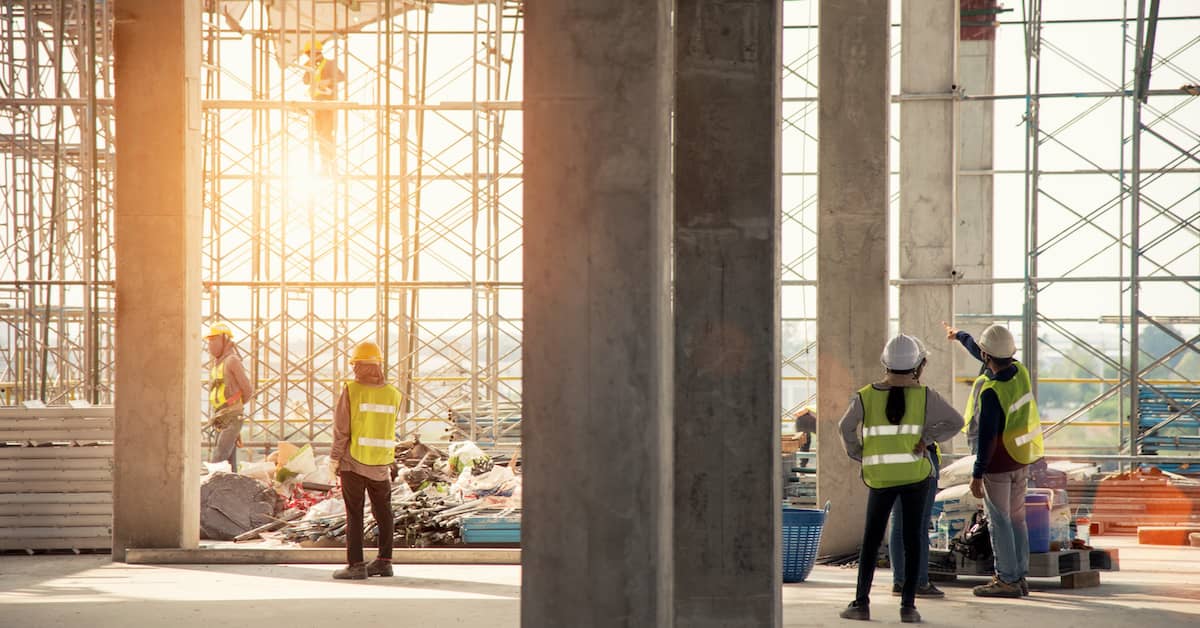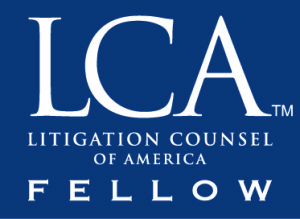
What Causes Scaffolding Collapses During Construction?
Scaffolding collapses during construction represent some of the most alarming accidents on construction sites. These terrible disasters can lead to significant injuries and, in some cases, death.
Scaffolding is a fixture of construction sites. Properly constructed and secured scaffolding can take workers multiple stories above the ground and enable them to perform jobs at elevation, seemingly without fear of injury.
The structural failure of scaffolding not only poses a risk to workers but also to pedestrians and people on nearby properties. Understanding the causes and legal ramifications of such collapses is essential for anyone involved in or affected by these incidents.
If you are injured or a loved one is lost due to scaffolding collapses during construction, consulting with a Fort Lee scaffolding accident lawyer can provide clarity, support, and direction on how to proceed. Call Maggiano, DiGirolamo & Lizzi today at (201) 585-9111 to schedule a FREE case evaluation.
What Causes Scaffolding to Collapse on Construction Sites?
Scaffold collapses are impactful events posing significant risks to construction workers and bystanders alike. These structures, designed to provide temporary but stable platforms for construction activities at heights, become hazardous when compromised.
The reasons behind such collapses are multifaceted, stemming from human error, environmental factors, and/or material failure. Delving deeper into these causes reveals the critical need for adherence to the stringent safety protocols and best practices in scaffolding construction and maintenance laid out by OSHA.
Several factors can contribute to scaffolding collapses during construction, including:
Poor Construction & Assembly
- Rushed Assembly: In the fast-paced environment of construction sites, scaffolding is sometimes erected hastily, with inadequate attention to the manufacturer’s guidelines or safety standards. This rush can lead to improperly secured components, unbalanced structures, and, ultimately, unsafe scaffolding.
- Lack of Planning: Without thorough planning, scaffolding might not be suitably tailored to the specific needs of the construction activity or the site’s environmental conditions, leading to instability under operational stresses.
Inadequate Securing
- Insufficient Anchoring: Scaffolding needs to be anchored securely to the building or ground to withstand loads and environmental forces like wind. Failure to properly anchor scaffolding can result in swaying or toppling.
- Improper Bracing: Cross-bracing and ties add lateral support to scaffolding. Neglecting these elements or incorrectly installing them compromises the structure’s integrity.
Use of Substandard Materials
- Degraded Components: Using scaffolding materials that are worn, damaged, or corroded can lead to structural failure under the weight of workers and equipment.
- Material Quality: Opting for cheaper, lower-quality materials might reduce costs in the short term but increase the risk of collapse due to material failure under stress.
Neglecting Inspections & Maintenance
- Foregoing Regular Checks: Skipping or superficially conducting inspections required by OSHA allows small issues, like loose fittings or minor damage, to escalate into serious risks.
- Maintenance Oversight: Continuous exposure to the elements and operational wear and tear necessitate regular maintenance. Ignoring this can weaken scaffolding over time, setting the stage for collapses.
Overloading
- Exceeding Weight Limits: Scaffolding has defined load capacities. According to OSHA rules, “each component of a scaffold system must be able to support its own weight…and at least 4 times the maximum intended load transmitted to that component.” Overloading it with too many workers, tools, or materials stresses the structure beyond its limits, risking collapse.
- Dynamic Loading: Sudden movements, such as dropping heavy tools or equipment on the scaffolding, can introduce unexpected dynamic loads, leading to failure.
External Collisions
- Vehicle Impact: On urban construction sites, scaffolding might be vulnerable to collisions with vehicles or construction equipment, particularly if site boundaries are inadequately marked or if driver visibility is poor.
- Construction Activities: Nearby construction activities, such as demolition or heavy lifting operations, can jeopardize scaffolding stability through direct impacts or vibrational forces.
Ensuring the safety of scaffolding operations demands a commitment to rigorous standards, from the initial design and assembly phase through to daily use and periodic inspection.
How Common Are Scaffold Collapses?
Scaffolding construction was the fifth most violated standard in 2022, according to OSHA. While not everyday occurrences, scaffold collapses happen with enough frequency to be a significant concern in the construction industry.
Between 2018 and 2022, an average of 41 workers a year died in falls from “collapsing structure[s] or equipment,” and an average of 85 were killed when “struck, caught, or crushed in collapsing structure[s], equipment, or material.” Adherence to safety protocols and regulations is the only way to save lives in the future.
What Injuries Are Suffered in Scaffolding Collapses During Construction?
Scaffolding collapses can lead to severe, life-altering injuries, thrusting victims into a world of physical, emotional, and financial turmoil. Victims can suffer from a range of injuries, from minor cuts and bruises to severe, life-altering conditions and death. Scaffold accident injuries may include:
- Fractures
- Traumatic brain injuries
- Spinal cord injuries
- Internal injuries
- Amputations
The aftermath of a scaffold accident requires not only medical care but also legal assistance to ensure that your rights are fully protected and you receive the compensation you deserve for your terrible losses. Reaching out to an experienced New Jersey scaffolding accident attorney is imperative. Their support and guidance can help alleviate the pressures of your case, allowing you to focus on recovery while they handle the legal intricacies.
What To Do After a Scaffold Collapse Accident
When a scaffolding collapse occurs, the immediate aftermath can be chaotic and confusing. Taking the right steps ensures your safety and safeguards your legal rights.
- Seek Medical Attention: Address your injuries immediately.
- Report the Incident: Notify your supervisor or site manager.
- Document Everything: Take photos of the scene and your injuries.
- Gather Witness Information: Collect names and contact details.
- Consult a Lawyer: Speak with a New Jersey scaffolding accident lawyer before dealing with insurance companies or signing any documents.
Though these steps help ensure your health and strengthen your potential compensation claim, your immediate well-being is most important. Everything else can wait until you have been treated for your injuries.
What Are My Legal Options After a Scaffolding Collapse?
After experiencing a scaffolding collapse, understanding your legal options will help to ensure you’re adequately compensated for your injuries or loss. Potential claims and avenues for legal recourse include:
Workers’ Compensation
Workers’ compensation benefits cover medical expenses and a portion of your lost wages following a workplace injury. For families who’ve lost a loved one, workers’ comp also provides a death benefit, offering some financial relief during difficult times.
Third-Party Liability Claims
Beyond workers’ compensation, you may have the right to pursue claims against parties whose negligence contributed to the accident. Potential defendants could include:
- Contractors & Subcontractors
- Property Owners
- Manufacturers
The potential for significant damages following a scaffolding collapse—ranging from medical bills and lost wages to pain and suffering—makes exploring every legal option that much more important. Whether it’s a workers’ compensation claim, a third-party liability lawsuit, or a combination of both, understanding your rights is the first step toward recovery.
Know Your Rights After a Scaffolding Collapse
Experiencing scaffolding collapses during construction can be traumatic and life-altering. As you navigate the aftermath, partnering with a knowledgeable and compassionate New Jersey scaffolding accident lawyer is imperative.
At Maggiano, DiGirolamo & Lizzi, we’re committed to helping our clients understand their legal options and pursue the compensation they deserve. Contact us today for a FREE consultation, and let us guide you through this challenging time. We are dedicated to seeking justice for victims and will fight tirelessly for your rights. Serving clients throughout New Jersey and New York.


















